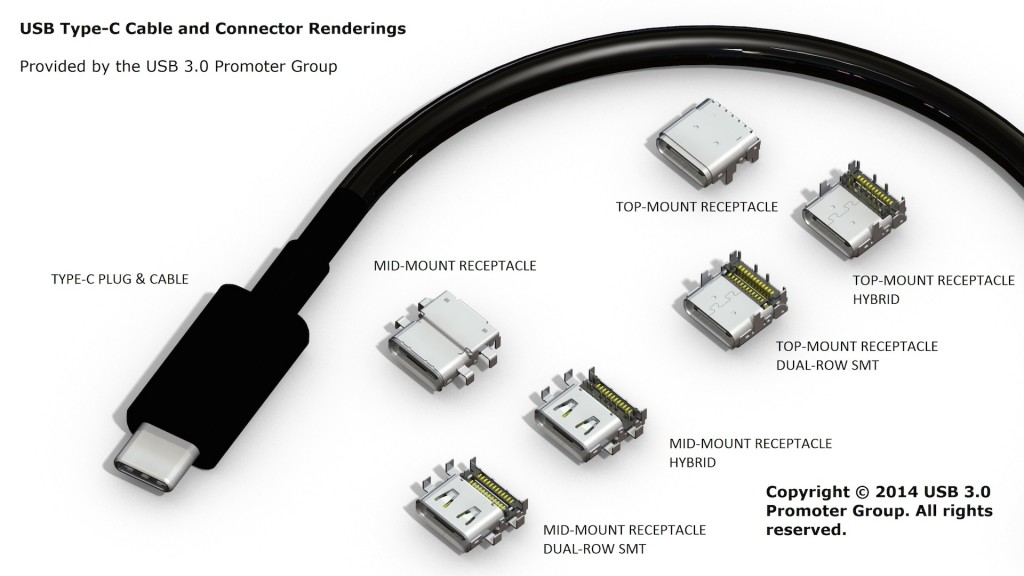USB Responds with Vigor: Meet Version 3.1
Machine Vision will likely benefit from the increased speed, power and usability of this new USB standard
As an industry standard, Universal Serial Bus (USB) has had a story arc that brings to mind the career-defining complaint of the late comedian Rodney Dangerfield: it, too, has at times struggled for a measure of respect.
Indeed, it took a while for the standard to gain traction in the market following its debut in the mid-1990s.
USB 1.1, released in 1998, included significant improvements and, as a result, it was the earliest revision to be widely adopted. But it wasn’t until version 2.0 was introduced in 2000 that USB truly became commonplace—replacing serial, parallel and other connections to most personal computers.
Meanwhile, the USB standard saw comparatively limited adoption in industrial settings, including for machine vision applications. (Once again, cue “The Dangerfield Narrative.”)
There were reasons for that, of course. Other standards—Camera Link HS, GigE, CoaXPress, Firewire and Thunderbolt, for example—offered greater bandwidth and could carry more power. Another factor was that common USB connectors needed to be made more rugged for regular industrial use.
The arrival of SuperSpeed USB 3.0 in 2008 foreshadowed a change in the established order. A dramatic increase in signaling speed and other improvements soon made 3.0 a potentially viable alternative for industrial applications. In particular, the USB3 Vision standard that followed in 2013 quickly gained support from vendors of cameras, cables, repeaters and converters, partly because it was based on the well-established USB 3.0, and, consequently, it offered the benefits of that standard while adding specific functionality targeted at those developing machine vision systems.
Now USB 3.1 has arrived. It’s faster and more powerful than its predecessor, and it might well be the version that finally delivers what has proven elusive for the USB standard: respect that is both earned and due across a variety of industrial as well as consumer applications.
Speed, Power and a Connector That Can’t Go Wrong
According to usb.org, USB 3.1 (or “SuperSpeed+ USB,” as it is dubbed by its advocates) “extends the existing SuperSpeed mechanical, electrical, protocol and hub definition while maintaining compatibility with existing USB 3.0 software stacks and device class protocols as well as with existing 5 Gbps hubs and devices and USB 2.0 products.”
In fact, there are three main prongs to the new spec, which was released in July 2013. The first is the substantial increase in transfer speeds, from 5 Gbps with 3.0 to 10 Gbps via SuperSpeed+. That may still lag behind other options such as Thunderbolt 2 and its 20 Gbps, but it is a hefty performance boost, which, when combined with the lower manufacturing costs of USB components, could help make SuperSpeed+ an attractive alternative for many applications.
USB 3.1 also offers enhanced power delivery that’s scalable up to 100 watts. With backward compatibility to USB 2.0 and the ability to co-exist with USB Battery Charging 1.2, the new iteration of USB-PD should increase the range of options for powering and charging peripheral devices.
Finally, USB 3.1 includes a new cable and connector—the smaller and slimmer Type C, which may eventually replace both full-sized USB as well as micro-USB cables, thereby enabling standardization of ports and cable types across devices.
The new connector is also reversible, which means users won’t have to squint to find the familiar USB trident symbol as a guide or resort to blind attempts to correctly connect a device. With a reversible plug, failure is literally not an option; and when ruggedized with thumbscrews or other locking mechanisms, the feature could prove as appealing to machine vision system designers as it will to consumers.

Promises, Limits and a Lesson From Another Technology
Viewed together, the most prominent features of USB 3.1 (as well as many other aspects of the standard that enable and encourage further innovation) could signal a great leap forward for connecting devices in a variety of settings. Moving from 4.5W to 100W, coupled with the 10 Gbps transfer rate, would allow many higher speed Camera Link systems to transition to USB 3.1, for example.
On the other hand, shorter cable lengths required by USB 3.1 could thwart some attempts to adopt the technology. In fact, a reason to stick with USB 3.0—for now, at least—would be to get more out of cable runs. It remains to be seen if new USB 3.1 chipsets expected to appear soon on circuit boards will improve on that aspect of the standard.
But even if they don’t, or it takes a while until they do, USB 3.1 still has enough now to potentially alter its place in the ongoing tension between what is regarded as the best or preferred standard for a particular system and one that has widespread acceptance and support.
And one only has to look at today’s digital imaging devices, for which comparatively low-cost but still versatile CMOS-based systems have all but replaced higher-quality CCD sensors that draw more power and provide slower data-throughput speed, to see how that tension can play out.



 Master of Cables, Part One: Getting Entangled in Machine Vision
Master of Cables, Part One: Getting Entangled in Machine Vision  Master of Cables, Part Two: Untangling the Future
Master of Cables, Part Two: Untangling the Future 